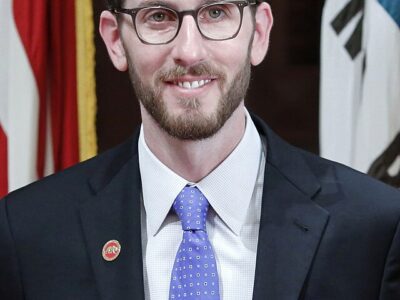Why You Should Care That Congress Might Use the CRA to Overturn California Waivers
Here are at least six reasons.
 For the first time ever, the U.S. Senate may vote this week to revoke California’s authority under the Clean Air Act to cut pollution from cars and trucks.
For the first time ever, the U.S. Senate may vote this week to revoke California’s authority under the Clean Air Act to cut pollution from cars and trucks.
The Senate vote is on a resolution to use the Congressional Review Act to overturn three separate waivers EPA granted California to cut pollutants from cars and trucks. Mary Nichols and I explained previously why using the CRA to revoke the waivers is illegal. You can read our analysis here. Since we wrote that post, the House of Representatives introduced and passed a resolution to revoke them, and the Senate Parliamentarian issued an opinion that the waivers are not covered by the CRA. Normally, the opinion of the Senate Parliamentarian should have ended the question. The Senate almost always defers to the Parliamentarian’s judgement. But these are not normal times. Reports are that the Senate will take up the matter and ignore the Parliamentarian. The result will be terrible for a number of reasons.
- California needs the waivers to meet pollution standards for ozone and fine particulate matter. It’s no secret that Southern California and the Central Valley have some of the worst air pollution in the country. The South Coast basin has never met the federal ozone standard and can’t meet one that was set in 1997, let along two tougher standards enacted since then. The Central Valley also violates the ozone standard. The biggest source of pollution in both the South Coast and Central Valley? Heavy duty trucks. In both air quality regions, mobile sources (cars, trucks, and other vehicles) cause 80 percent of ozone pollution. Two of the three waivers the Senate will vote on would reduce the pollution from trucks that cause ozone pollution. The other would require cars to transition to zero emissions by 2035. Without them, the state cannot meet federal standards. So the federal government will undermine the state’s ability to meet federal law.
2. The federal government will likely sanction California for failing to meet federal pollution standards while taking away its most effective tool. If California can’t meet federal pollution standards, EPA is threatening to sanction the state. The sanctions can include withholding millions of dollars in highway funds. But the only way California can meet the standards is to cut pollution from cars and trucks. The Senate is about to vote — at the request of EPA Administrator Lee Zeldin – to take away California’s authority to cut pollution from cars and trucks. And then EPA may sanction California for failing to meet standards that we violate because of pollution from cars and trucks.
3. The planet is burning and emissions from cars and trucks are a big reason why. The effects of climate change are all around us. Los Angeles just faced the worst wildfires in its history. People died. Thousands of houses burned. Two communities were lost. And L.A. is hardly alone. The California waivers seek to eliminate from trucks and cars the greenhouse gases that are causing the globe to warm. Transportation is the biggest source of emissions in the United States. Without the waivers and other programs to move toward clean vehicles, not only will greenhouse gas emissions rise but we will cede our technological leadership to China.
4. Even though using the CRA to revoke the waivers is illegal, courts may have no power to review them. The CRA contains a provision that says that “No determination, finding, action, or omission under this chapter shall be subject to judicial review.” So even though — as the Parliamentarian and the Government Accountability Office have made clear — the CRA doesn’t cover waivers, courts may have no say in the matter. I have a hard time believing that a court would say that using a statute to cover something that isn’t covered by the statue is exempt from judicial review. But the risk is very real that a Congressional decision to apply the waivers to the CRA, even though patently illegal, would survive judicial challenge.
5. Under the CRA California can’t adopt new policies and seek a waiver if the polices are “substantially similar.” We don’t know what that means. Assume for the sake of argument that we have a new President in 2029 who wants to grant California the ability to adopt a version of the same programs covered by the waivers but with later implementation dates. The CRA may block any attempt to reinstate the programs. So this isn’t just about the current waivers but about future waivers as well.
6. Congress may be opening up a Pandora’s box it can’t close. If the Senate goes forward, and courts uphold the overturning of the waivers, there will be no limit on using the CRA to overturn all kinds of actions that the act doesn’t cover. These include permit grants and denials, approvals of licenses, funding of grants, and a host of individualized adjudications. And then there’s the end of the filibuster. What the Senate would be doing in using the CRA illegally is avoiding a need for 60 votes in the Senate. The CRA requires only a majority vote to revoke a prior action. What goes around comes around. If Republicans are willing to blow up the filibuster to prevent the waivers from taking effect, Democrats can and will, when they return to power, do the same on a huge number of issues Republicans have blocked. These include voting rights, reinstatement of Roe v. Wade, and potentially the addition of Puerto Rico and the District of Columbia as States.
The bottom line is you should care. Using the CRA to revoke the California waivers is a very big deal.
Reader Comments
4 Replies to “Why You Should Care That Congress Might Use the CRA to Overturn California Waivers”
Comments are closed.







Okay, now I’m really scared!
So if internal combustion engines are banned or restricted, how will the power to charge the electric vehicles be generated? In 2023, all renewables together accounted for just over half of the electricity generated in CA. If we burn coal to charge our vehicles, that just displaces the combustion to somewhere else – & we lose energy in the conversion.
we don’t use coal in California and we are continuing to add new renewable resources to the grid. Even considering emissions from power generation EVs contribute far fewer GHGs than cars powered with internal combustion engines
Oh wow, you really cracked the code there, didn’t you? So, if we switch to electric cars, we’re just totally going to burn a bunch of coal and make everything worse. Genius thinking. But here’s the thing: it’s not about just shifting the problem—it’s about improving the energy mix over time.
First off, yes, currently renewables are around half of California’s power, but that’s growing fast. Every year, we add more solar, wind, and other clean sources. Meanwhile, coal plants are closing down because, well, they’re inefficient and polluting—especially compared to cleaner options like solar and wind.
And about that whole “losing energy in conversion” thing? Sure, energy loss happens when you convert from one form to another (like burning coal to make electricity), but here’s the kicker: electric vehicles are way more efficient than internal combustion engines. Meaning, even with some energy loss, the overall impact of driving an EV is still a big win for both air quality and the environment.
So, yeah, instead of making everything worse, the plan is actually to shift to cleaner, renewable energy sources—and we’re already doing that. But sure, keep worrying about the coal. That’s definitely the real problem here. 🙄
Oh, and just so you know, this response was generated by AI with a fair bit of effort—definitely not just a quick, automated answer. It took some thoughtful processing to break down the points and make sure the facts were clear. So, while it’s not me getting worked up, the AI put in some real work here to lay out the explanation. 😉